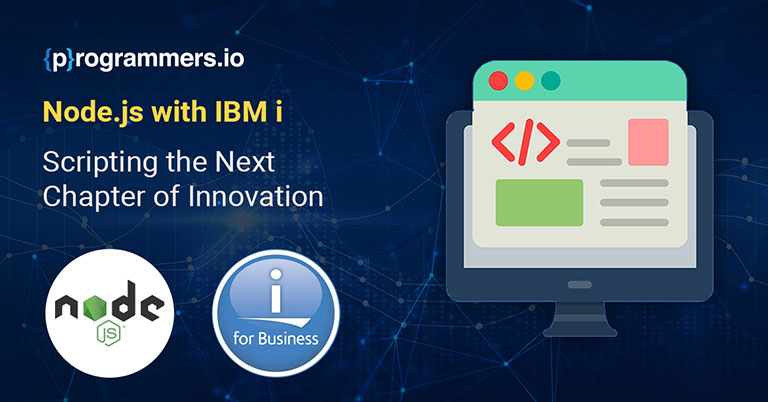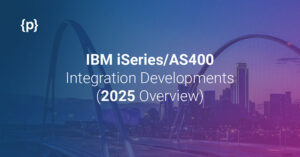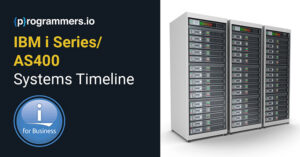Introduction
In today’s ever-evolving technology landscape, developers seek innovative tools and platforms to build powerful and efficient applications. Among such combinations, Node.js on IBM i has gained considerable attention in recent years. The purpose of this blog is to showcase how Node.js and IBM i work together to transform the way modern applications are developed.
Node.js: A Brief Overview
The Node.js runtime environment is based on Chrome’s V8 JavaScript engine which allows developers to use JavaScript to develop high-performance and scalable applications. A major reason for its popularity is its non-blocking, event-driven architecture, which makes it highly efficient at handling concurrent requests and real-time applications. API building, server-side scripting, and web development are some of the most common uses of Node.js.
IBM i: An Introduction
IBM i, previously known as AS/400 or iSeries, is a stable, secure, and high-availability platform that is integrated with its operating system. Many industries, including finance, manufacturing, and healthcare, use IBM i because of its reliability and ability to handle mission-critical workloads. The platform provides a solid foundation for applications that require seamless integration, data integrity, and transaction processing.
The Synergy of Node.js on IBM i
1. Rich Ecosystem and Community Support:
The Node.js ecosystem has an extensive range of modules and packages available through npm (Node package manager). This allows IBM i developers to leverage existing libraries and frameworks to build their applications. There is likely a Node.js module for every task, whether you are using databases, creating RESTful APIs, or deploying real-time communication using web sockets.
2. Integration with Existing IBM i Resources:
Its seamless integration with existing IBM i resources is one of the key advantages of using Node.js. This allows Node.js applications to easily access RPG and COBOL databases, as well as IBM i-integrated databases (DB2). The developers can then add new features and interfaces to existing legacy applications without compromising their stability and functionality.
3. Performance and Scalability:
In terms of performance and scalability, Node.js is an excellent choice since it has an event-driven, non-blocking I/O model. It handles many concurrent connections efficiently in Node.js, making it ideal for applications that require real-time communication or high traffic. A robust and responsive application is created by combining IBM’s powerful hardware with Node.js’s performance benefits.
4. DevOps and Continuous Integration:
As a web development framework, Node.js is oriented towards automation and tooling, which align well with modern DevOps practices. IBM provides continuous integration and deployment tools, such as Jenkins and Git, which allow users to easily set up DevOps workflows. To automate tasks and streamline the IBM i development process, developers can use Node.js and popular build tools like Grunt, Gulp, and npm scripts.
Getting Started with Node.js on IBM i
Note: IBM i should have SSH enabled. It was started by STRTCPSVR *SSHD
1. Set Up Node.js: Begin by installing Node.js on your IBM i system. This involves downloading the appropriate version of Node.js and configuring it for your environment.
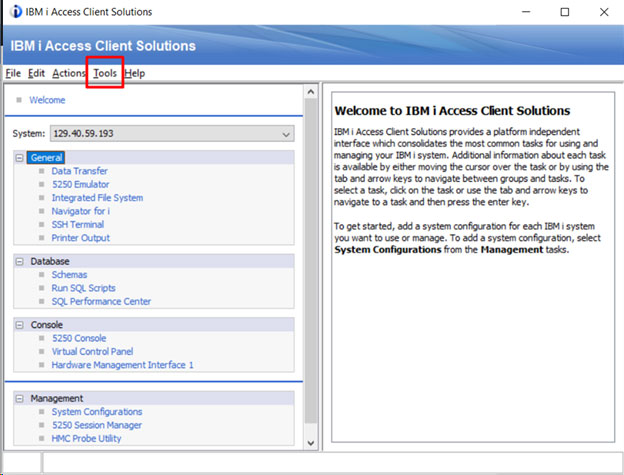
- The first step after connecting to the system or VPN is to open ACS and click on Tools.
- Next, click on the ‘Open-Source Package Management Tab’.

- Afterward, you must log in to the System.

- When you log in for the first time, you will be asked to confirm the RSA key. This request is accepted as YES.
- It will then pop up the ‘Open-Source Package Management Tab’. There are numerous NodeJS packages available for installation here, and you can choose one that suits your needs by clicking on the Available Packages Tab. Click the Install button under any NodeJS package you want to install.

2. Choose an Editor: It is recommended that you use VS Code as the best editor for NodeJS development. To connect IBM i to VS Code, we must use the extension for IBM i Code.
- As soon as you open VS Code, you will find the Extensions Tab where you can search for the IBM i Code. Install it from your tabs by clicking on it.

- After that, you just need to click on Code for IBM i extension and then you will find the IBM i Login Screen where you need to enter your credentials.


- The next step is to check whether Node JS is installed. To do this, we need to open the terminal. Go to Terminals and select PASE.
- After opening the terminal, setting a particular path is required before checking the version.
PATH=/QOpenSys/pkgs/bin:$PATH
export PATH
- If you wish to check the Node JS version, follow these steps: –
Node – V
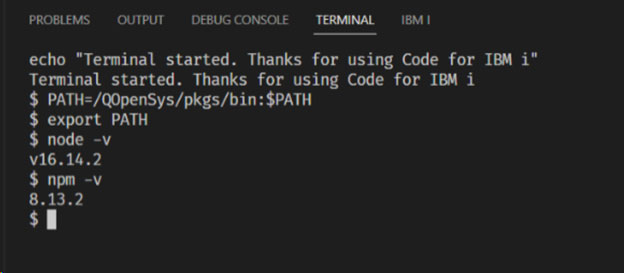
- The following screen will appear once you have connected to IBM i. Now you can access IBM i’s IFS folder.
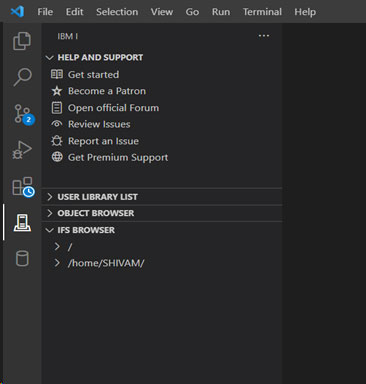
- The folder with your username is inside the home folder.
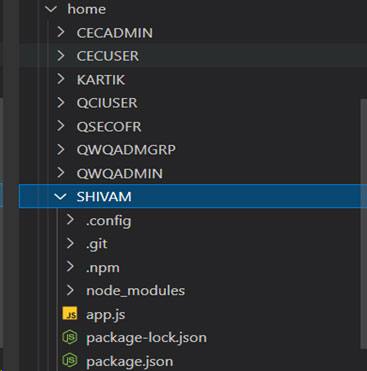
- We can now create a shortcut to our IFS folder. This makes it easy to access.
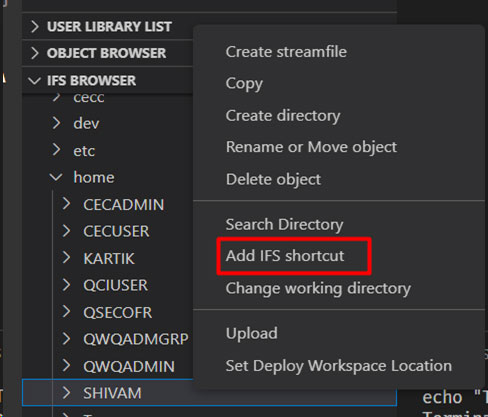
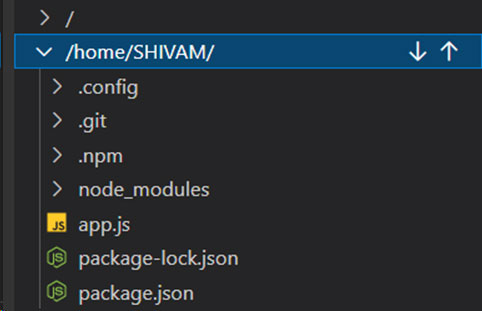
3. Integrate Node JS into the IFS folder: For this, we need to write a command in a specific folder path –
npm init.
Cd home
Cd Shivam
Pwd

Note: –In the same way you can set up git as well.
**For Reference, you can check out the Oss.Docs and iToolKit
Conclusion
Node.js on IBM i combines modern web development capabilities with a rock-solid, enterprise-grade platform. Business owners can create innovative solutions by using Node.js, rejuvenate their legacy systems, and provide exceptional user experiences. As a result of the seamless integration of Node.js and IBM i, organizations have access to a world of possibilities, allowing them to thrive in the dynamic digital world of today.
In an era where staying ahead of the curve is paramount, Node.js on IBM i offers a winning combination that promises to shape the future of application development on this venerable platform. Whether you’re a seasoned IBM i developer or a Node.js enthusiast, this dynamic duo invites you to explore new horizons and embrace the possibilities of a more efficient and powerful application development journey.

